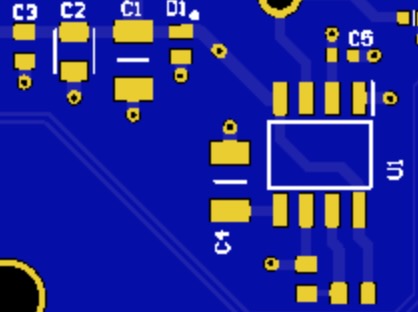Exact Measurement? For Innovation, and Progress
A coherence-based Noise Reduction System, approaches a time-independent reference, or exact standard, for the measurement of time. Download summary of scientific research here.
Reduction Of Intermodulation Distortion
With Coherence Technology

Areas of Application of Coherence Technology Pdf download here: https://www.upgradingtechnology.com/support-files/areasofapplication.pdf
Decreased Intermodulation Distortion
A study was conducted to see how Coherence Technology would affect the Inter-modulation distortion of an audio signal. Sound Technologies Spectra Plus signal analyzer was used to measure the left output channel of a CD player.
A music sample was compared first without processing the signal with CT. Then with the signal processed with CT connected in between the CD player and the test equipment.
When the CT equipment was connected, the results showed a significant decrease in inter-modulation distortion, up to 22%. Inter-modulation distortion is correlated with higher resolution and timbrel clarity.
Applications
Reduced inter-modulation distortion, particularly when enhanced by Coherence Technology (CT), holds substantial value for scientists, technologists, innovators, and new product developers. This is especially relevant in fields where precise signal integrity is crucial, such as audio technology, telecommunications, and even advanced scientific instruments. Below are some of the benefits and potential applications:
### Benefits
1. **Enhanced Signal Clarity and Accuracy**:
By minimizing inter-modulation distortion, CT allows for clearer and more accurate signals. This is crucial in fields like audio engineering, where sound quality directly influences user experience and product success.
2. **Improved System Performance**:
Reducing distortion leads to better performance of electronic systems, which can handle more complex and subtle signals without degradation. This is essential for high-stakes applications like satellite communications and medical imaging.
3. **Increased Resolution and Fidelity**:
For audiophiles and professional musicians, the higher resolution and timbral clarity brought about by reduced distortion means a truer-to-life reproduction of sound. This precision is also beneficial for scientific applications where even minor inaccuracies can skew research outcomes.
4. **Longer Lasting Equipment**:
Equipment that operates with less distortion tends to experience less wear and tear over time. This extends the lifespan of expensive devices and systems, reducing maintenance costs and downtime.
5. **Enhanced User Experience**:
For consumer electronics, minimizing distortion can lead to a better user experience, fostering brand loyalty and satisfaction. High fidelity sound is often a key selling point for audio-related products.
### Potential Applications
1. **High-Fidelity Audio Equipment**:
Reducing inter-modulation distortion can greatly improve the quality of audio devices, from professional recording equipment to consumer headphones and speakers.
2. **Telecommunications**:
In telecom, clarity and accuracy of transmitted signals are paramount. Technologies that reduce distortion can enhance the reliability and quality of service, providing clearer voice calls and more reliable data transmission.
3. **Medical Imaging Systems**:
Technologies like CT can be applied in medical imaging, where precision is crucial. Reduced distortion could lead to clearer images and thus more accurate diagnoses without the need for retests or additional radiation exposure.
4. **Scientific Instruments**:
Many scientific measurements rely on the integrity of electronic signals. Reduced distortion ensures that instruments like spectrometers and oscilloscopes provide more accurate readings, leading to more reliable research data.
5. **Automotive and Aerospace**:
In fields where safety and precision are critical, minimizing distortion can enhance the performance of navigation systems, satellite communications, and onboard sensors.
6. **Consumer Electronics**:
Beyond audio, this technology can improve the performance and user experience of various consumer electronics, including televisions, smartphones, and gaming consoles, where sound quality can significantly impact user satisfaction.
By continuing to refine technologies that minimize inter-modulation distortion, innovators can push the boundaries of what's possible across a wide range of industries, paving the way for new advancements and improvements in both consumer and professional products.